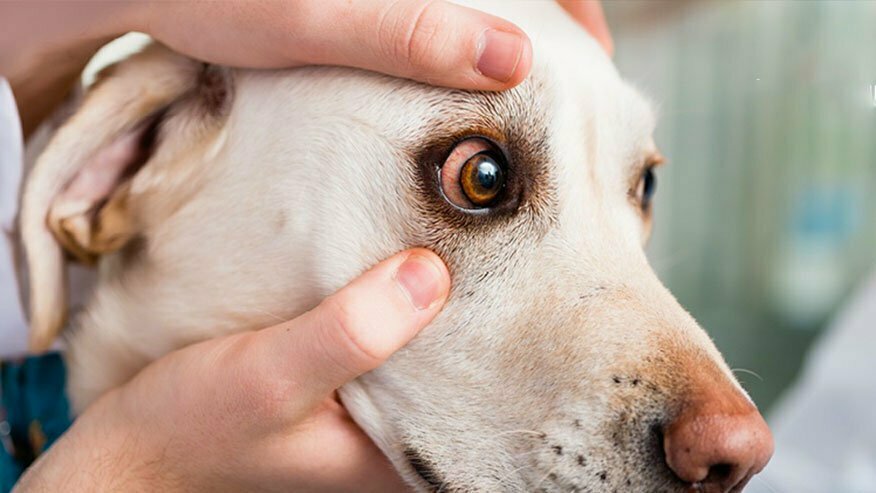Dry eye disease (KCS – Keratoconjunctivitis Sicca)
Dry eye disease
Dry eye disease in dogs is a common condition that develops as a result of reduced quality and / or amount of tear film (extremely low tear production).
The tear film covers the surface of the eye and consists of 3 layers: aqueous, lipid, and mucous. These layers of the tear film are produced by lacrimal glands, eyelid skin glands, and conjunctiva. Any condition that affects these structures can lead to a change in the quality of the tear film. Tear film disorders are often encountered in dogs with seasonal allergies and food allergies, so pets with these problems and the appearance of “red eyes” should be taken to an ophthalmologist who will check the quality of the tear film.
Because the tear film provides nutrients, antimicrobial protection, and oxygen to the surface of the eye, lack of tears can result in excessive eye irritation, discomfort, development of a corneal ulcer or scar and this can further lead to impaired vision or complete blindness.
Modern medical treatments are very successful in terms of controlling the clinical symptoms of dry eye disease in dogs. Some patients do not respond to medication, so specific surgery (parotid canal transposition) may be performed.
Transposition of the parotid duct is the relocation of the duct of the salivary gland to the lower lid of the affected eye so that saliva can moisten the surface of the eye. This type of surgery is done in our hospital.

